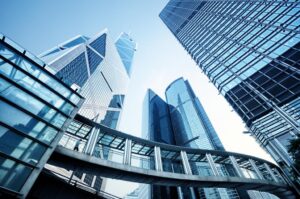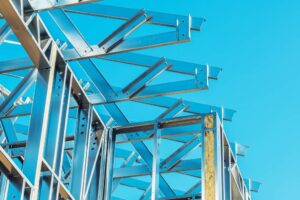In recent years, the construction industry has witnessed a remarkable transformation through the emergence and growing popularity of prefab metal buildings. These innovative structures, also known as prefabricated or pre-engineered metal buildings, have revolutionized the way we approach construction projects. With their inherent advantages of cost-effectiveness, speed, flexibility, and sustainability, prefab metal buildings have become the go-to choice for various applications, ranging from commercial and industrial to residential and agricultural.

In this article, we will delve into the world of prefab metal buildings, exploring their benefits, applications, and the future of this rapidly evolving construction trend.
- Understanding Prefab Metal Buildings:
Prefab metal buildings are structures that are manufactured off-site, primarily in a factory setting, and then transported to the construction site for assembly. These buildings are composed of steel or metal components, engineered to fit together seamlessly, ensuring strength, durability, and structural integrity. This prefabrication process allows for a high level of customization, enabling architects and builders to design structures tailored to specific needs, from simple warehouses to complex multi-story buildings.
- Advantages of Prefab Metal Buildings:
a) Cost-Effectiveness: Prefabricated metal buildings offer significant cost advantages over traditional construction methods. The streamlined manufacturing process, efficient use of materials, and reduced labor requirements contribute to lower overall project costs. Moreover, the precise engineering of these structures minimizes wastage, resulting in additional savings.
b) Speed and Efficiency: Time is a critical factor in construction, and prefab metal buildings excel in this aspect. Since the components are fabricated in a controlled factory environment, concurrent site preparation activities can take place, significantly reducing the construction timeline. On-site assembly is faster due to the prefabricated nature of the components, allowing for quicker project completion and earlier occupancy.
c) Flexibility and Customization: Prefab metal buildings are highly versatile and can be tailored to meet specific design requirements. From adjusting dimensions and layouts to incorporating unique architectural features, the modular nature of these structures facilitates customization. This adaptability enables businesses and individuals to create spaces that align precisely with their needs.
d) Durability and Safety: Steel, the primary material used in prefab metal buildings, boasts exceptional strength, making the structures highly durable. Metal buildings resist harsh weather conditions, such as hurricanes, earthquakes, and fire, offering enhanced safety and protection for occupants and assets. Additionally, steel is a non-combustible material, further minimizing the risk of fire damage.
e) Sustainability: Prefab metal buildings are an eco-friendly construction option. Steel is a recyclable material, reducing the environmental impact associated with construction waste. Additionally, these structures’ energy efficiency can be enhanced by integrating insulation, solar panels, and other sustainable features, leading to reduced energy consumption over the building’s lifetime.

- Applications of Prefab Metal Buildings:
a) Commercial and Industrial: Prefabricated metal buildings find extensive use in commercial and industrial sectors. From warehouses, storage facilities, and retail outlets to manufacturing plants and workshops, these structures offer flexible and cost-effective solutions for businesses of all sizes. The open-span designs provide unobstructed floor space, allowing for efficient operations and adaptability to changing requirements.
b) Residential: Prefab metal buildings have gained traction in the residential sector as well. These buildings are utilized for single-family homes, vacation cabins, apartment complexes, and multi-story condominiums. The versatility of the design and the speed of construction makes them an attractive choice for homeowners looking for efficient and affordable housing options.
c) Agricultural: The agricultural industry has also embraced prefab metal buildings for various purposes. Barns, storage sheds, livestock shelters, and equipment storage facilities can be quickly erected using prefabricated components.
Learn more at Wiki as well.